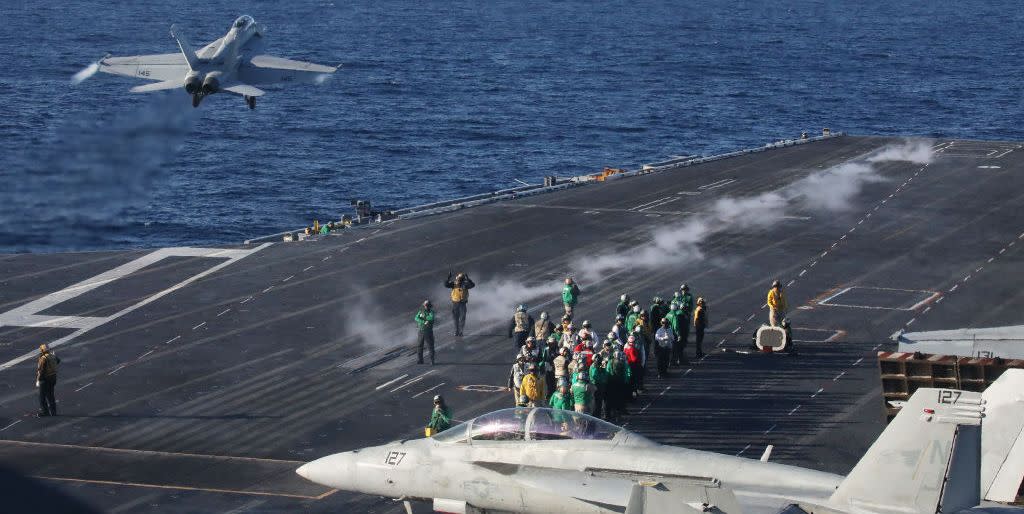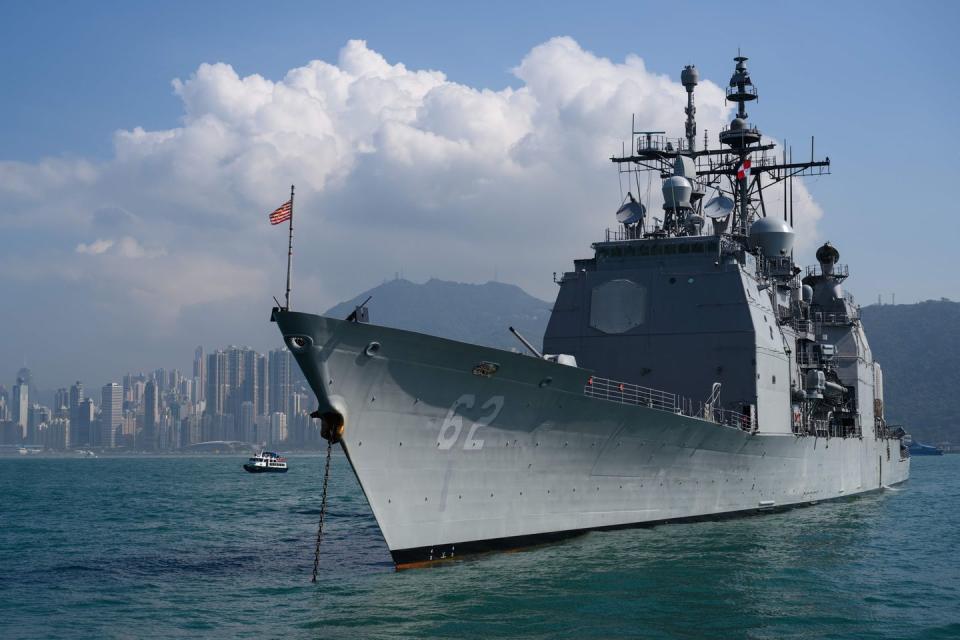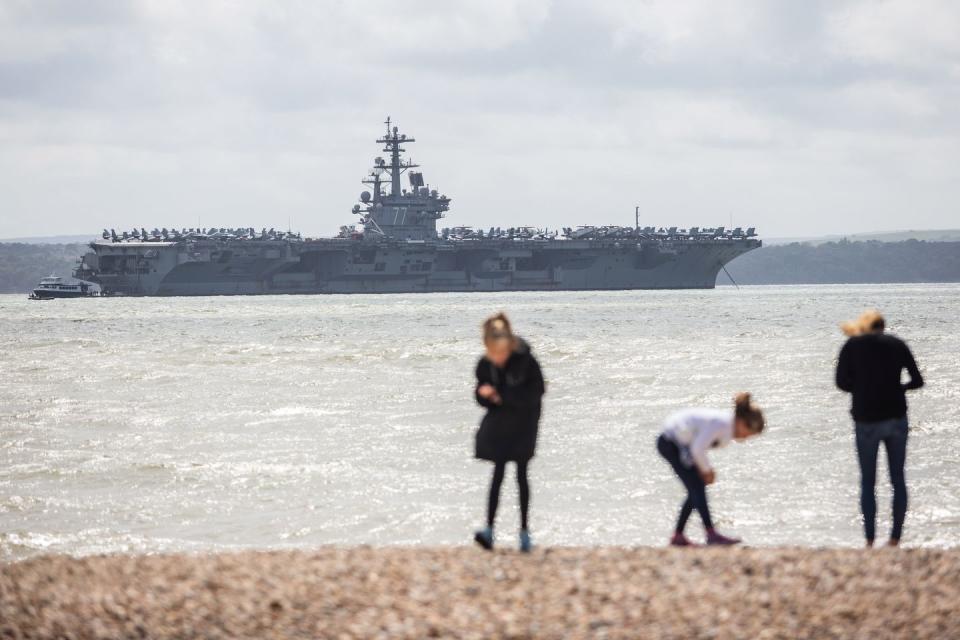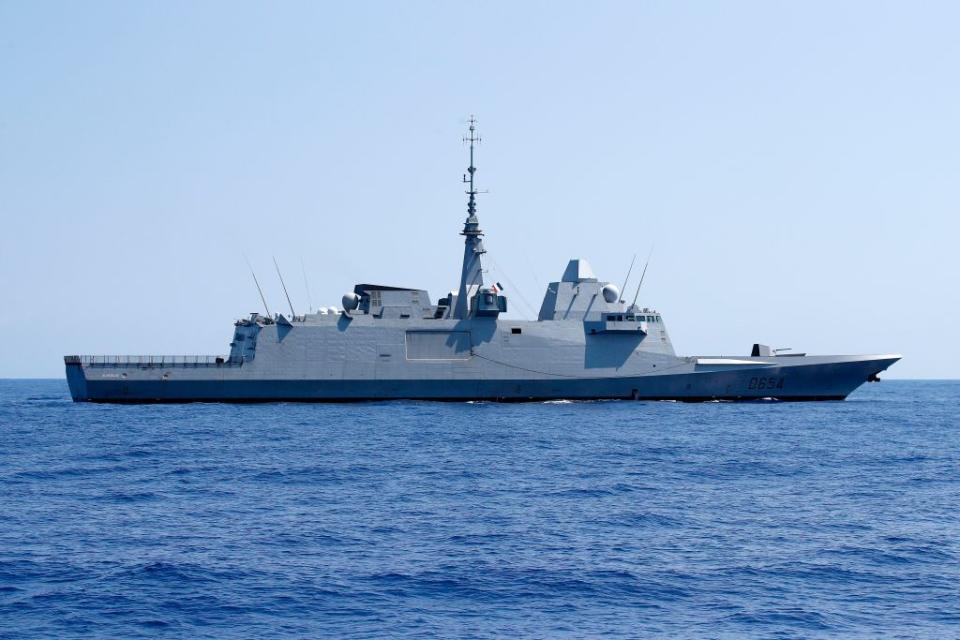New Pentagon Study Spells Doom for Two Aircraft Carriers...and Maybe More

A Pentagon study calls for the U.S. Navy to give up two nuclear-powered aircraft carriers.
In return, the Navy would use the money saved to build up a fleet of smaller, lighter frigates.
The study highlights growing dissatisfaction within the Pentagon for large, budget-draining carriers that are vulnerable targets in wartime.
An assessment prepared by the Office of the Secretary of Defense proposes cutting two aircraft carriers from the U.S. Navy’s roster to boost the number of smaller warships. Under the proposal, the Navy would retire two aircraft carriers and plow the savings into buying several dozen frigate-sized ships, as well as large unmanned ships. The proposal is likely to run into stiff opposition from proponents of carriers as well as the carrier lobby both inside and outside government.
The study, according to Defense News, would trim the number of nuclear-powered “supercarriers” from 11 to just nine. The number of large surface combatants, both guided missile cruisers and guided missile destroyers, would remain constant at between 80 and 90, compared to the approximately 83 ships in service right now. The number of frigate-sized small surface combatants, on the other hand, would swell from 15 to 20 to between 55 and 70.

President Donald Trump campaigned in 2016 on the promise of a 350-ship navy. Four years later the size of the fleet has remained largely unchanged, today standing at 297 ships.
The new proposal would get the Navy close to the planned 350 ship goal by boosting the low end of the fleet—smaller frigates and unmanned or lightly manned warships—ships the Navy desperately needs. The service’s littoral combat ship program, which will produce 15-20 ships, is a failure that did not produce adequately armed and equipped warships. The Navy plans to build dozens of guided missile frigates, the so-called FFG(X) program, to correct course on the low end.

A reduction in the number of aircraft carriers from 11 to nine would have repercussions. A good rule of thumb for carriers—or any fleet of ships for that matter—is that for every three ships deployed at sea another three ships are preparing to deploy or returning from a deployment. In the event of a national emergency these three ships could be rushed into service or pressed to remain at sea longer, for a total of five or six. Three more will be in long-term maintenance or overhauls and would require many months, even in emergencies, to become seaworthy.
Today the U.S. Navy’s eleven carrier fleet could conceivably scramble to put six to seven ships at sea on short notice. Reducing the number of carriers by two will reduce availability, though not by a large factor.

Building up a large force of frigates will restore balance to what’s become a top-heavy fleet. The Navy retired all of its guided-missile frigates in the 2000s and 2010s, and what remained was a fleet of expensive destroyers and cruisers. While this preserved capability, particularly sensors and missile tubes, this also meant that for any contingency, big or small, the only ships capable of responding were expensive, overqualified warships.
In the 2000s, the Navy was forced to send billion dollar warships to chase Somali pirates in skiffs, a ridiculous proposition. Minor actions such as drug enforcement, freedom of navigation exercises in disputed waters, and showing the flag are conducted by ships capable of protecting aircraft carriers from missile swarms and shooting down ballistic missiles, an expensive waste of resources. A (relatively) cheap frigate could handle these contingencies much more cost effectively.
Could the U.S. Navy get by with nine carriers? Unmanned, or lightly manned warships equipped with dozens of missile magazines could help make up for the lost firepower. The Navy is also adding anti-ship missiles to the P-8A Poseidon maritime patrol aircraft, and the FFG(X) warship will also pack offensive weaponry. All of these new platforms can also cover more territory worldwide than two carriers and their escorts.
It would certainly be nice to keep the current eleven carrier fleet, but it also seems increasingly likely that America’s carrier force is in for a major shakeup.
Source: Defense News
You Might Also Like

